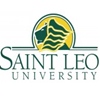Introduction and Overview
The University of North Carolina at Wilmington is a public research university located in Wilmington, North Carolina, in the southeastern United States. It is part of the University of North Carolina system. The school offers a wide range of undergraduate and graduate programs covering arts and sciences, health and human services, business, education and other fields.
History and Founding Time
The school was founded on September 4, 1947. It was originally named Wilmington College. It was a junior college that mainly provided education for veterans of World War II. In 1963, the North Carolina State Legislature passed legislation to make it a four-year liberal arts college. In 1969, the college was promoted to a university and renamed the University of North Carolina at Wilmington.
School Strength
Faculty: It has 1,012 academic staff members who can provide students with rich academic guidance and support.
Academic Achievements: The school has made remarkable research achievements in the fields of marine science, environmental science and biomedicine. The school's research results are often published in academic journals in related fields, and it cooperates with enterprises and government agencies to carry out research projects.
Teaching resources: The school has three campuses, the main campus is located in Wilmington, there is a branch campus in Jacksonville and the Marine Science Center in Myrtle Grove. The school has advanced teaching facilities and laboratories, such as the laboratories in the Marine Science Center are equipped with advanced marine research equipment.
Nature of the institution
Public research university.
Educational philosophy
With the motto of "Dare to Learn", it is committed to cultivating students' curiosity, creative thinking and critical thinking skills, focusing on interdisciplinary collaboration, diversity and inclusion, moral responsibility and the unremitting pursuit of excellence, helping students become forward-looking leaders to meet complex local and global challenges.
Key laboratories and disciplines
Key disciplines: The marine science major has achieved good results by taking advantage of its geographical advantages, and provides interdisciplinary courses covering multiple directions such as marine biology, marine chemistry, marine geology and marine physics. The biological science major provides a wide range of learning and research opportunities, and students can participate in marine biology research projects. In addition, majors such as creative writing, education and business management are also well-known.
Key laboratories and research centers: It has a marine science center, which provides an important platform for research and teaching in the field of marine science. In addition, there are centers to support undergraduate research and scholarships, centers for teaching excellence, and centers for innovation and entrepreneurship.
Departments
The school is divided into eight colleges, namely Cameron School of Business, College of Health and Human Services, College of Humanities, Social Sciences and Arts, College of Science and Engineering, Watson School of Education, Graduate School, Honors College and University College.
Rankings
Ranked 201st in the 2024 U.S. News & World Report National Comprehensive University Rankings.
Ranked 109th in the 2024 U.S. News & World Report National Best Public University Rankings.
Costs
The basic undergraduate tuition is $22,890/year, and the school offers scholarships of up to $5,000. The tuition after deducting the scholarship is $17,890/year.
Campus Environment
Campus Facilities: The campus covers an area of 661 acres and has modern teaching buildings, libraries, laboratories, computer centers and other teaching facilities, as well as student activity centers, gymnasiums and other entertainment facilities. The William Madison Randall Library has two floors and provides rich learning resources and a comfortable learning environment.
Natural Environment: The campus is carefully planned and maintained, full of green plants and open spaces, creating an atmosphere that is both modern and close to nature. The school is close to the Atlantic Ocean, providing students with beautiful seaside scenery and abundant outdoor activities.
Campus Culture: The school's mascot is Sammy C. Hawk, and the sports team is called "Seahawks", participating in the NCAA Division I-CAA competition. The school focuses on the all-round development of students and has carried out a variety of campus cultural activities, such as art exhibitions, concerts, sports competitions, club activities, etc., creating a positive and vibrant campus atmosphere.
-

Harvard University
-

Massachusetts Institute of Technology
-

South University
-

University of West Georgia
-

Stanford University
-

Northwest Nazarene University
-

Hawaii Pacific University
-

Shorter University
-

Nova Southeastern University
-

Saint Leo University
-

Mesoamerican University
-

Istmo University
-

Mariano Galvez University of Guatemala
-

Regional University of Guatemala
-

Galileo University
-

Francisco Marroquín University
-

Rafael Landívar University
-

University of the Valley of Guatemala
-

University of San Carlos of Guatemala
-

Technological Institute of Tlaxcala Plateau
-

Golfo University
-

Technological University of South Sonora
-

Technological University of Huejotzingo
-

Tizimín Institute of Technology
-

Chilpancingo Institute of Technology

